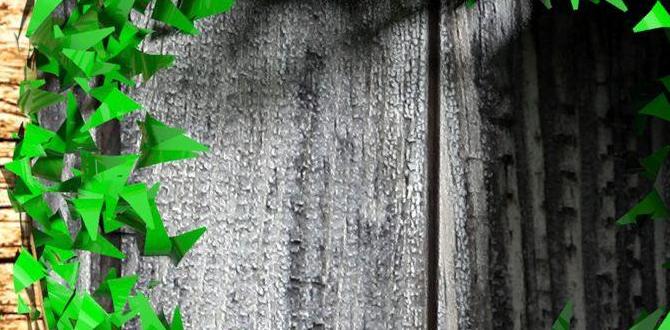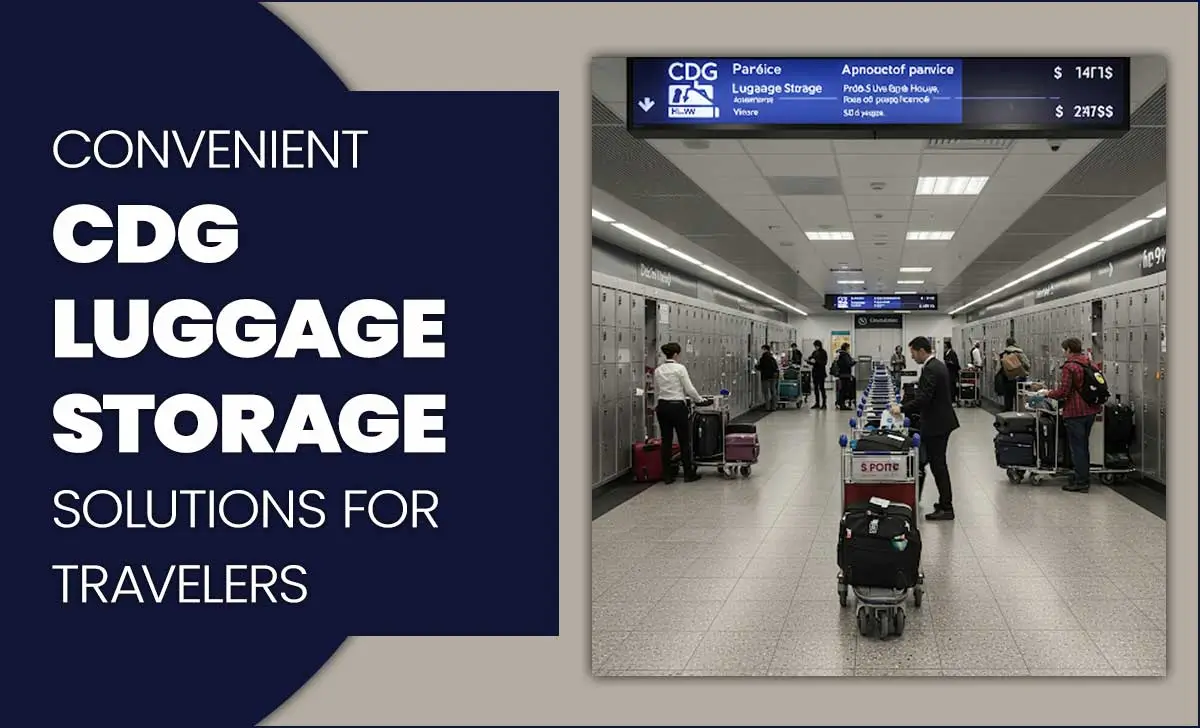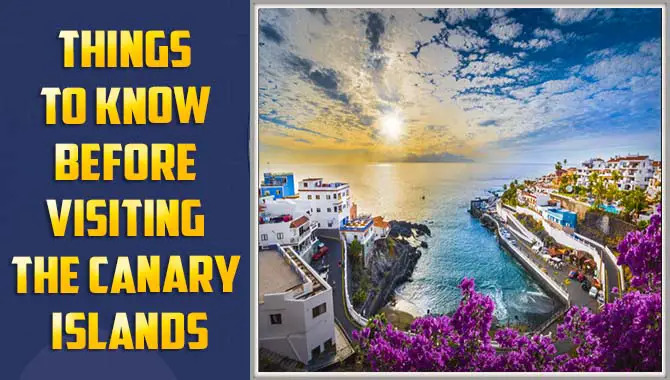Planning a trip to Bohol? This accessible travel guide offers essential tips for a smooth and enjoyable experience, ensuring comfort and convenience for all travelers. Discover how to navigate Bohol’s stunning sights with ease, from practical packing advice to accessible accommodation and transportation. Get ready for a stress-free adventure!
Welcome, fellow travelers! If you’re dreaming of the beautiful island of Bohol, with its Chocolate Hills, tarsiers, and pristine beaches, you might also be wondering how to make your trip as comfortable and accessible as possible. Navigating a new destination can feel a bit overwhelming, especially when you need to consider specific accessibility needs.
But don’t let that stop you! Bohol is brimming with natural wonders, and with a little preparation, everyone can experience its magic. This guide is here to help you every step of the way, making your Bohol adventure a truly joyful and stress-free journey. We’ll cover practical tips from getting around to where to stay, ensuring your comfort and ease are prioritized.
Your Bohol Accessible Travel Guide: Planning for Paradise
Bohol is an island paradise in the Philippines known for its breathtaking landscapes and unique attractions. For travelers seeking accessible options, a bit of planning goes a long way. This guide will help you navigate the island with confidence, ensuring you can enjoy all that Bohol has to offer without unnecessary worry. We’ll break down the essentials, from transportation and accommodation to specific tips for visiting popular sites.
Why Bohol is a Great Accessible Destination
Bohol is increasingly becoming a more inclusive destination. While not every single corner is perfectly equipped, many tourism providers and local authorities are making efforts to improve accessibility. The island’s laid-back atmosphere and the warm hospitality of its people contribute significantly to a positive travel experience for everyone. Many popular tourist spots are actively working on improving infrastructure, and local guides are often happy to assist.
Getting to Bohol with Ease
Your journey to Bohol can start smoothly with accessible transportation options.
By Air: Tagbilaran Airport (TAG) is Bohol’s main airport. While smaller, it generally handles domestic flights efficiently. Major airlines operating flights here, such as Philippine Airlines and Cebu Pacific, have processes in place to assist passengers with reduced mobility. It’s crucial to inform your airline at least 48 hours in advance about any specific needs you have, such as requiring a wheelchair assistance upon arrival or departure.
By Ferry: For those coming from other islands like Cebu, ferries are a popular and often more budget-friendly option. Major ferry companies like OceanJet and SuperCat operate daily trips. Accessibility can vary between ferry terminals and vessels. It’s advisable to contact the ferry company directly beforehand to inquire about their specific accessibility policies and any assistance they can offer for boarding and disembarking.
Accessible Accommodation in Bohol
Finding a comfortable and accessible place to stay is key to a relaxing vacation. Bohol offers a range of accommodations, some of which are more accessible than others.
- Hotels: Several resorts and hotels, particularly in popular tourist areas like Panglao, are making strides in accessibility. Look for hotels that advertise accessible rooms, often featuring wider doorways, grab bars in bathrooms, and roll-in showers. It’s always best to call ahead and confirm the specific features of their accessible rooms to ensure they meet your needs. Websites like Booking.com or Agoda often have filters for “accessibility features.”
- Resorts: Some beachfront resorts offer ramps for easier access to common areas and restaurants. While private villas might offer more space, check for single-level living and accessible bathroom facilities.
- Guesthouses and Homestays: These can be more variable. While they might offer a more personal touch and flexibility, accessibility is often limited. If opting for these, inquire directly about stairs, bathroom setups, and general ease of movement.
Navigating Bohol: Accessible Transportation Options
Getting around Bohol requires some prior knowledge of available transport. While the island is developing, some methods are more accommodating than others.
Tricycle: These are ubiquitous and great for short distances. However, they can be difficult to access, especially for wheelchair users, and offer limited space. Negotiate fares beforehand.
Habal-Habal (Motorcycle Taxis): Primarily for solo travelers, these are not suitable for those needing secure seating or with mobility challenges.
Van/Car Rentals with Driver: This is often the most convenient and accessible option for exploring Bohol. You can rent a van or car with a driver for daily tours. This allows you to set a comfortable pace, make stops as needed, and have direct assistance for getting in and out of the vehicle. When booking, specify your need for ample space or assistance with luggage and mobility aids. Tours can be customized to include more accessible routes.
Public Buses: Long-distance public buses operate between towns. These are generally basic and may not offer significant accessibility features. They are best suited for those who can manage independently with minimal assistance.
Essential Packing for Comfort and Convenience
Packing smart can make a world of difference, especially when ensuring your personal comfort and needs are met on a trip.
- Comfortable Clothing: Lightweight, breathable fabrics are essential for Bohol’s warm, humid climate. Think cotton or linen.
- Sun Protection: A wide-brimmed hat, sunglasses, and high SPF sunscreen are non-negotiable.
- Insect Repellent: Especially important for evenings and when visiting natural areas.
- Personal Care Items: Bring any personal hygiene products you prefer. For travelers who may need them, packing an adequate supply of adult diapers or child diapers is crucial for peace of mind. Brands offering discreet, absorbent, and comfortable options can make long travel days and excursions much more manageable. Consulting resources like Pennsylvania Department of Health can offer general advice on managing personal health while traveling, which extends to packing appropriate supplies.
- Medications: Pack prescription medications in their original containers with a copy of your prescription. Include a basic first-aid kit.
- Mobility Aids: If you use a cane, walker, or wheelchair, ensure it’s in good working condition. Consider a lightweight, foldable model for easier transport.
- Power Bank: For charging devices on the go.
- Reusable Water Bottle: Stay hydrated and reduce plastic waste.
Exploring Bohol’s Accessible Attractions
While exploring, it’s important to know which attractions are more amenable to accessible travel. Here are a few highlights:
The Chocolate Hills
The iconic Chocolate Hills are a must-see. The main viewing deck at the Chocolate Hills Complex in Carmen offers a panoramic view. While there are many steps to climb to the very top viewpoint, there are also accessible platforms lower down that offer good views. Inform your driver or guide, and they can help you navigate the best accessible approach. The path leading to the viewing area has been improved over the years, and assistance can often be arranged.
Tarsier Sanctuary
Visiting the Philippine Tarsier and Wildlife Sanctuary in Corella or the Conserve Tarsier Foundation is a wonderful experience. These sanctuaries are dedicated to the conservation of these tiny primates. The pathways within the sanctuaries are generally well-maintained and relatively flat, lined with natural vegetation. Guides are knowledgeable and can point out the tarsiers in their natural habitat while ensuring minimal disturbance. Be mindful that tarsiers are nocturnal and are best viewed quietly.
Panglao Island Beaches
Panglao Island is famous for its beautiful beaches like Alona Beach and Dumaluan Beach. While sandy beaches can pose challenges, many resorts along these beaches have ramps and accessible pathways leading to their common areas and restaurants. Some resorts may even offer assistance to get closer to the water’s edge. It’s a good idea to coordinate with your chosen resort beforehand to see what beach access they can provide.
Loboc River Cruise
The Loboc River Cruise is a relaxing way to see the lush inland scenery. The floating restaurants are generally accessible via ramps from the boarding points. Once on board, the decks are usually level, making it easy to move around and enjoy the buffet lunch and cultural performances. The cruise itself is a gentle and scenic journey, suitable for most individuals.
Man-Made Forest
The Bilar Man-Made Forest is a dense forest of mahogany trees that stretches for two kilometers. It’s a beautiful place for a scenic drive or a brief stop. The road is paved and well-maintained. You can stop your vehicle and step out for photos. While there aren’t specific pathways for walking far into the forest, the roadside offers easily accessible views and photo opportunities.
Tips for a Smooth Trip: Practical Advice
Beyond the major attractions, a few practical tips can ensure your Bohol adventure is as stress-free as possible.
Plan Visits During Less Crowded Times
To avoid crowds and make navigation easier, try to visit popular sites during off-peak hours or days. Early mornings are generally less crowded than mid-day, and weekdays are often quieter than weekends.
Communicate Your Needs Clearly
Don’t hesitate to communicate your needs to hotel staff, tour guides, drivers, and restaurant personnel. A clear and polite explanation will help them assist you better. For example, stating “I need a room with a roll-in shower” or “Could you please assist me to the boat ramp?” can make a significant difference.
Stay Hydrated and Pace Yourself
Bohol’s tropical climate can be intense. Always carry water and take frequent breaks, especially during outdoor activities. Listen to your body and don’t overexert yourself. Building in downtime at your accommodation is a great way to recharge.
Consider a Dedicated Accessible Tour Operator
For a truly seamless experience, consider booking your Bohol tour through a company that specializes in accessible travel or has a good reputation for accommodating diverse needs. They can arrange specific vehicles, plan accessible routes, and recommend suitable accommodations.
Embrace the Local Culture and Hospitality
Filipino hospitality is renowned worldwide. The people of Bohol are generally warm, friendly, and willing to help. A smile and a polite approach can go a long way in ensuring you receive the assistance you need and have a memorable, positive interaction.
Accessible Dining in Bohol
Enjoying local cuisine is a vital part of any travel experience. In Bohol, many restaurants, especially in tourist areas like Panglao, are accustomed to catering to varied needs.
Resort Restaurants: These often have the most accessible dining environments, with ramps, spacious seating, and staff trained to assist. Many offer familiar Western dishes alongside Filipino favorites.
Standalone Restaurants in Town: While variability exists, many modern restaurants in Tagbilaran City and Panglao will have accessible ground-floor dining. It’s worth checking reviews or calling ahead if you have specific concerns about steps or bathroom accessibility.
Local Eateries (Carinderias): These simple, open-air eateries are a great way to experience authentic Filipino food at local prices. Accessibility here is often basic, with seating potentially on mats or simple benches. Assess the ground level and proximity to your transport before deciding.
Dietary Needs and Special Supplies
When dining out, communicate any dietary restrictions or allergies clearly. For travelers who require specific personal care items, like incontinence products, it’s best practice to pack an ample supply from home. While larger towns may have pharmacies, the availability of specialized brands or specific absorbency levels might be limited. Packing enough adult diapers or child diapers ensures you don’t have to worry about finding them on the island, allowing you to focus on enjoying your vacation.
Understanding Infrastructure and What to Expect
Bohol, like many parts of the Philippines, is a developing nation. Infrastructure can vary greatly between urban centers and rural areas. While efforts are being made, not all sidewalks are smooth, and some older buildings may have steps. This is why having a pre-arranged, accessible vehicle for your tours is highly recommended. Knowing what to expect will help you manage expectations and plan accordingly.
Reliable sources for understanding infrastructure development in the Philippines, though broad, can sometimes offer context on ongoing projects. For instance, the Department of Public Works and Highways provides information on national infrastructure initiatives which indirectly impact accessibility.
Example of Accessible Features in a Bohol Resort
A well-equipped accessible resort in Bohol might offer the following:
| Feature | Description | Benefit for Accessible Travel |
|---|---|---|
| Accessible Room Entry | Wider doorways (at least 32 inches) with lever handles. | Easier for wheelchair users and those with mobility aids to enter and maneuver. |
| Roll-in Shower | No high thresholds, allowing a roll-in shower chair (often provided or can be requested). | Enables independent or assisted showering for individuals with limited mobility. |
| Grab Bars | Strategically placed in the bathroom around the toilet and within the shower area. | Provides support and stability for transfers and movement in the bathroom. |
| Accessible Common Areas | Ramps leading to reception, restaurants, and pool areas. | Ensures ability to access and enjoy resort facilities. |
| Assistance Services | Staff trained to assist with luggage, transport, and navigating the property. | Provides on-demand support for personalized needs. |
Sample Accessible Tour Itinerary (3 Days)
Here is a sample itinerary focusing on accessible-friendly activities:
| Day | Morning Activity | Afternoon Activity | Evening |
|---|---|---|---|
| Day 1: Arrival & Panglao Exploration | Arrive at Tagbilaran Airport. Transfer to accessible accommodation in Panglao. Settle in. | Visit a resort with accessible beach access. Enjoy a relaxing afternoon by the sea. | Dinner at an accessible beachfront restaurant. |
| Day 2: Inland Wonders | Explore the accessible pathways at the Tarsier Sanctuary in Corella. | Visit the Chocolate Hills Complex, utilizing accessible viewpoints available. Enjoy lunch at a Loboc River Cruise floating restaurant. | Relaxing dinner at your hotel or a nearby restaurant. |
| Day 3: Local Culture & Departure | Visit the Bilar Man-Made Forest for photos. | Explore Tagbilaran City, perhaps visiting a local market if accessible. Head to the airport or ferry port for departure. | N/A |
Frequently Asked Questions
Q1: How easy is it to find accessible transportation in Bohol?
It can vary. While tricycles are common, they may not be suitable for everyone. Renting a car or van with a driver is the most recommended accessible option. It’s best to book this in advance through your hotel or a reputable tour operator.
Q2: Are there accessible ATMs and banks in Bohol?
Yes, major towns like Tagbilaran City and tourist hubs like Panglao have ATMs and bank branches. Most modern bank branches are generally accessible, but it’s wise to confirm if you have specific concerns.
Q3: What are the essential personal items to pack for an accessible trip to Bohol?
Besides standard travel items, consider packing any necessary mobility aids, personal care items like adult or child diapers if needed, a first-aid kit, medications, and comfortable, breathable clothing.
Q4: Can I get around Bohol using a wheelchair?
Navigation can be challenging in some areas as not all paths are universally accessible. Popular resorts and designated tourist attractions are making improvements, but older streets and some natural sites may have uneven terrain. Having an accessible vehicle and pre-planning your route is key.
Q5: Where can I find accessible restaurants in Bohol?
The most reliable options are restaurants within resorts, particularly in Panglao. Many standalone restaurants catering to tourists in these areas also offer good accessibility. It’s always best to call ahead or check online reviews if you have specific requirements.
Q6: Is it safe to travel in Bohol?
Bohol is generally considered a safe destination for tourists. However, like any travel destination, it’s important to exercise common sense, be aware of your surroundings, and take standard precautions against petty theft, especially in crowded areas.





